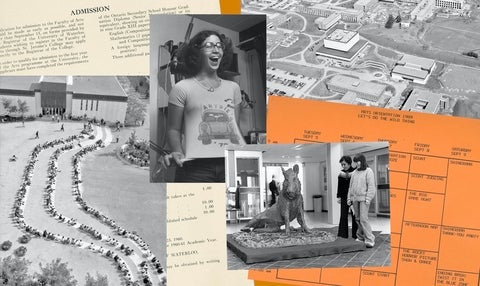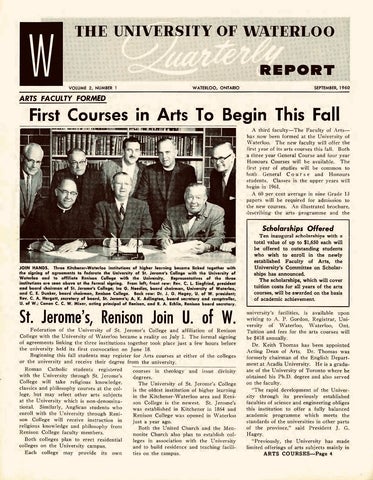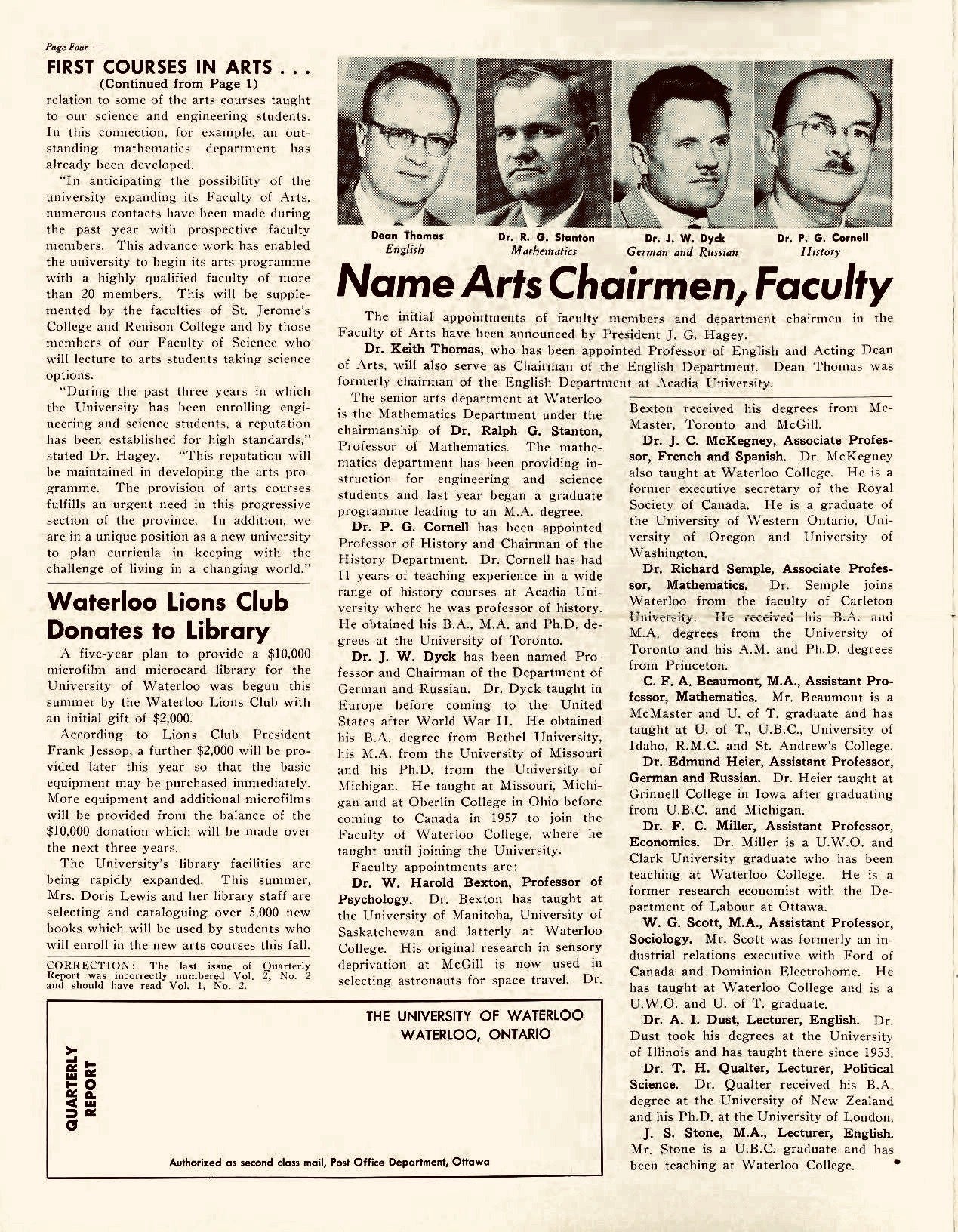
While this year has been full of unprecedented challenges, 2020 also marks a happy milestone: the Faculty of Arts just turned 60 years old. Happy Birthday, Arts!
It was the fall of 1960 when Arts became the University of Waterloo’s third faculty. The addition of an arts faculty, it could be argued, made the three-year-old university more complete. In fact, in September that year, President J. G. Hagey said as much in the University’s Quarterly Report cover story:
“The rapid development of the University through its previously established faculties of science and engineering obliges this institution to offer a fully balanced academic program which meets the standards of the universities in other parts of the province."
In the beginning, there was Arts – and Math?
The founding Arts departments included English, History, German and Russian, Political Science, French and Spanish, Economics, and Sociology. The largest department in the Faculty was Mathematics— yes, Math was part of Arts until it became a faculty in 1967. Today the Arts community is comprised of 15 departments, two schools (three if we count the Balsillie School), and the affiliated and federated institutions.
The first Arts classes in 1960 included students recruited from the newly federated and affiliated St Jerome’s College and Renison College (those institutions’’ names at the time). Students could enrol in arts courses at either of the colleges or in the Faculty of Arts and receive their degree from the University.
The undergraduate entry average in 1960 was 60 per cent; today it’s 80 per cent. By 1963 students could choose from 15 majors (including Math); today Arts students can choose from 29 majors and 48 minors. Arts graduate studies today includes 37 distinct masters and doctoral programs.


Living and learning in a changing world
“The provision of arts courses fulfills an urgent need in this progressive section of the province," said President Hagey. "In addition, we are in a unique position as a new University to plan curricula in keeping with the challenge of living in a changing world."
The founding President’s words were apt. Over our sixty-year history, research and teaching in Arts has increasingly tackled the challenges of living in a changing world — as currently evidenced by the large number of Arts scholars contributing insights and guidance for living with our current pandemic predicament.
“I think the Faculty has expanded and developed in positive, forward-thinking, and yes, truly innovative ways,” says Sheila Ager, Dean of Arts, who joined Waterloo in 1987 (the year the University turned thirty, and Arts was still in its twenties).
“We’re moving toward greater integration and interdisciplinary initiatives with our colleagues from across the entire campus. We’ve become more responsive to and engaged with the world beyond the university, and I see a real commitment to having an impact on society’s problems, whether through research or teaching or both,” says Dean Ager.
At age 60, Arts does indeed have an outstanding record for success in both teaching and research. Our faculty play a critical part in Waterloo’s consistent top ranking for humanities and social sciences research grants; Arts scholars hold top honours including Killams, Orders of Canada, and Royal Society of Canada fellowships. Arts professors have earned more than 70 Distinguished Teaching Awards since 1976 – more than any other faculty. And our graduate students have earned 14 Amit and Meena Chakma Awards for Exceptional Teaching by a Student since 1999.
With more than 63,600 Arts alumni worldwide making their contributions in a vast range of fields, it is always a happy challenge to encapsulate their impact. As our dean suggests, a common theme is a focus on and commitment to understanding the human in a vast range of contexts.
Reflecting on the 1960 Quarterly Report announcement of 20 new Arts faculty member hires, Dean Ager said: “All male, all white, but it was a start!” Arts has come a long way since then: 45 per cent of our 330 (or so) full-time faculty members are women. While there is much more work to be done on equity and inclusion (and on making the world a better place), over the last 60 years, Waterloo Arts has made a very good start.